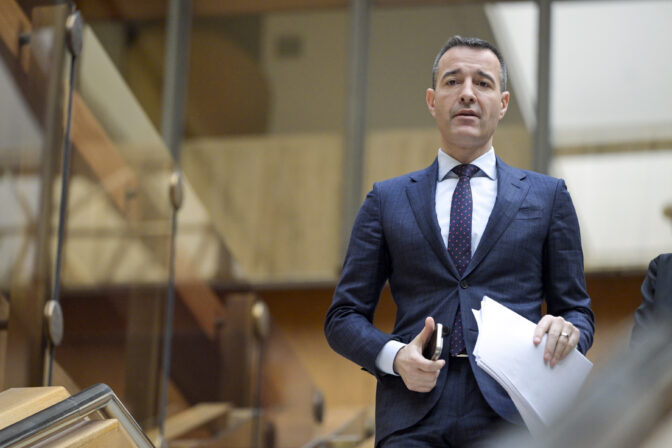BRATISLAVA, March 8, (WEBNOVINY) — The Slovak telecommunications market weakened again last year. Revenues in both the mobile and fixed-line segments reached EUR 2.037 billion last year which represents a drop of 3.4 percent compared with a year ago. According to Orange Slovensko CEO Pavol Lancaric, the key factors influencing last year’s development included significant competition on the market supported by existence of several virtual operators as well as persisting regulation. “Regulation is a process, which still persists and still fundamentally influences our business,” Lancaric stated on Thursday. Moreover, as he said both factors have a negative impact on investments in the telecom sector.
The share of all players on the market with the exception of the mobile operator O2, whose stake swelled by 2.4 percentage points to 7.7 percent, went down in yearly terms. Orange weakened by 0.4 percentage points to 35.8 percent and Slovak Telekom by 1.8 points to 44.1 percent. The share of UPC Broadband Slovakia in the telecommunications market decreased 0.1 percentage points to 2.5 percent. Lancaric says that the market is unbalanced as on one hand the number of users is growing but on the other revenues are going down. According to Lancaric, telecommunications operators thus serve more and more users whom they offer an increasingly wider range of services but receive less and less money for it. “This contradiction has been here for some time and it can continue for some time but it will not last forever,” Lancaric added.
The share of mobile voice services in overall revenues of the Slovak telecommunications market was 72 percent, up 0.5 percentage point compared with 2010. Mobile data formed 4.3 percent share in revenues when their portion declined by 0.4 percent y/y. Fixed-line voice services made 11.2 percent in overall revenues of the market, down less than one percentage point from a year ago and fixed-line Internet had an 8.9 percent stake, up 0.7 percent on a year-on-year basis. The structure of telecommunications users was traditionally more favorable for mobile voice services that were used by nearly 68 percent of customers last year. Nearly 8 percent used mobile Internet, 14.2 percent voice services in fixed networks and 10.3 percent fixed Internet.
SITA












